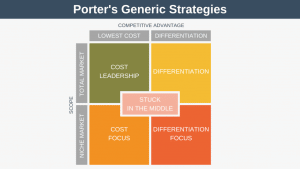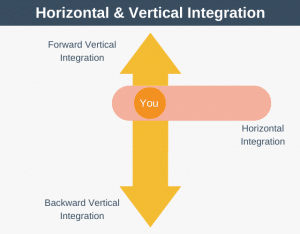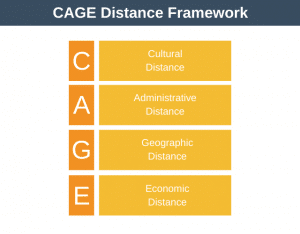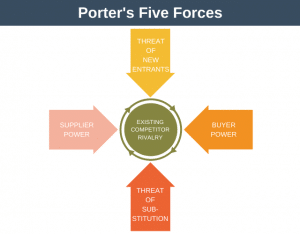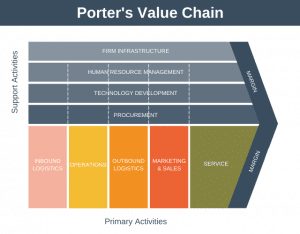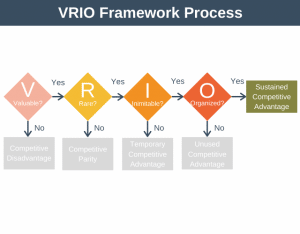Previously we described the theory behind Porter’s Five Forces model. Today we’re going to look at examples of the model action.
To recap, the Proter’s Five Forces model assists us in evaluating a strategic position to determine if it is strong. It does this by looking at the position from all perspectives based on five fundamental forces:
- New Entrants: what barriers to entry exist?
- Substitution: how easy is product/service substitution?
- Buyer’s Bargaining Power: to what extent can buyers bargain?
- Supplier’s command of Industry: how much power do suppliers have?
- Existing competitors: what advantages do existing competitors have?
By examining the strength and direction of each of the above forces, we can quickly assess the strength of an organization’s position and therefore it’s ability or potential to make a profit.
Five Forces Example: Amazon
Traditionally the industry of selling books worked like this:
- The publisher decides which books to publish (and own the rights for).
- The book gets printed.
- The book goes to a distribution centre.
- The book goes from the distribution centre to a store.
- The customer goes into the store and buys the book.
Amazon looked at this model and thought they could do it better by becoming a distribution centre that deals directly with the customer via a web interface (this is actually a very similar strategy to that used by Dell and Ikea). Let’s now examine how the five forces interact with this model. I’ve used + to indicate a positive force and – to indicate a negative force.
New Entrants
- + If Amazon becomes the number one global Internet book seller it will be very difficult for competitors to enter the market because Amazon will have huge economies of scale.
- + Once Amazon is established it will have a direct relationship with the customer and hold their payment details, making switching inconvenient for the customer. This, combined with good customer service will result in the customer becoming locked-in.
Substitution
- + Amazon can be very easily substituted for a bricks and mortar bookstore.
- – Another web store could easily replace Amazon (which is why customer lock-in and self publishing is important (see below))
Buyer’s Bargaining Power
- + Amazon sells to individual consumers. An individual consumer has no real buying power to negotiate lower prices.
- + An Internet store is considerably less expensive to run than multiple physical stores, and so much of this discount can be passed on to consumers.
Suppler Command in the Industry
- – Publishers are powerful because they own the rights to best sellers and popular titles. To have the most popular items missing from the store could jeopardize the entire business.
- + Allowing online self publishing could take power away from publishers, and increase Amazon’s margin. Additionally, it would make it even more difficult for competitors to enter the market as Amazon would own the rights to these self published editions.
Existing Competitors
- + Traditional book stores have much higher overheads than Amazon, so Amazon products will be cheaper.
Conclusion
A Five Forces analysis can help us understand the different factors at play in the market in which Amazon operates. You can see (and I’m sure you already knew this) that Amazon has many advantages over and above traditional physical bookstores. What may not have occurred to you and what the Five Forces example has highlighted, however, is just how strategically important e-books and self-publishing could become, in increasing Amazon’s strength and margins, whilst simultaneously reducing the strength of publishers.

